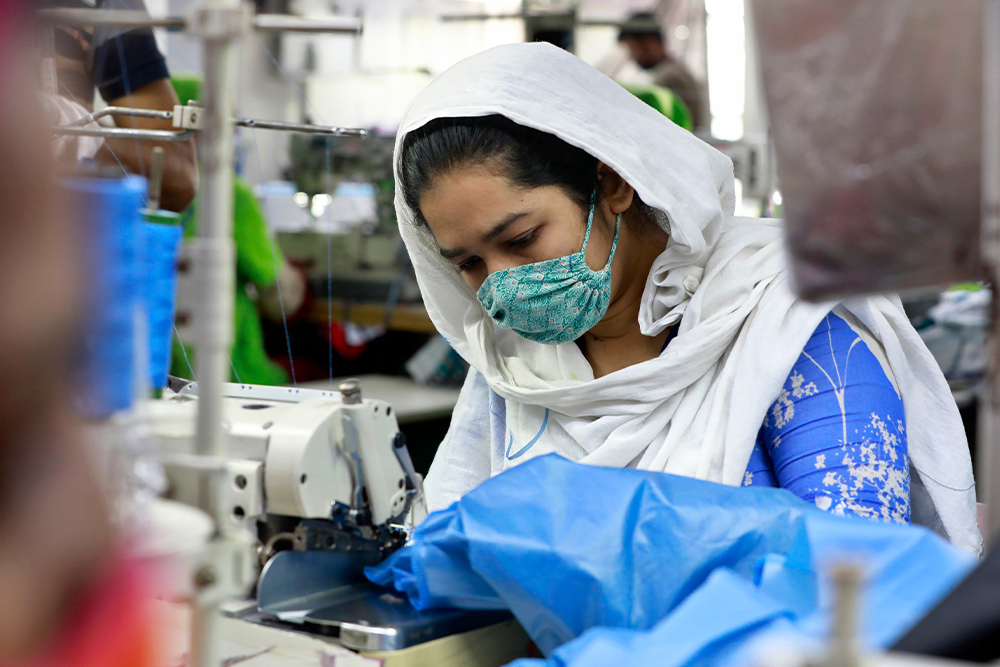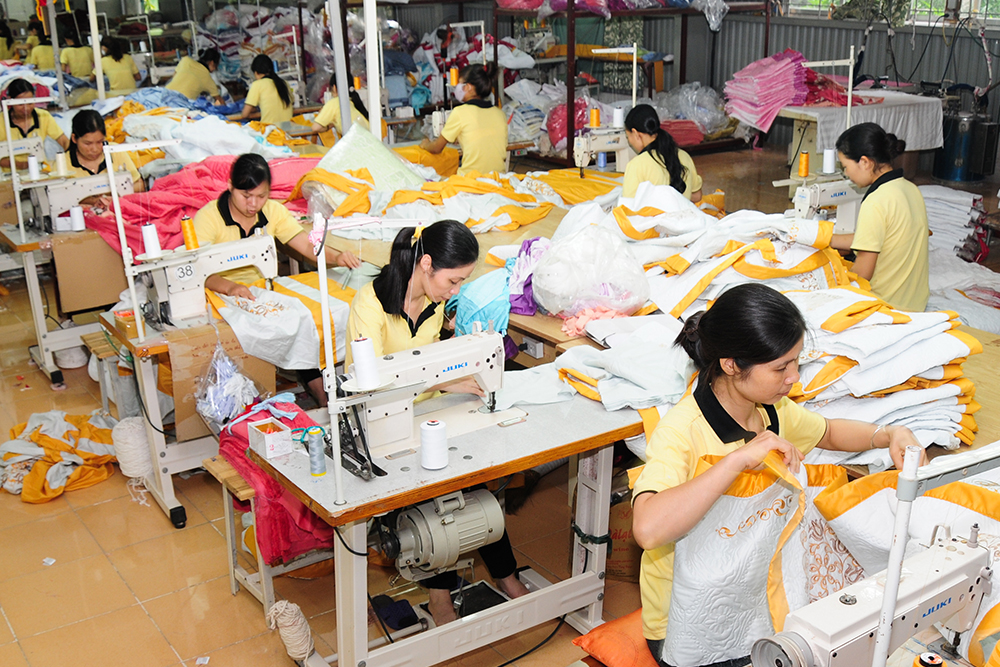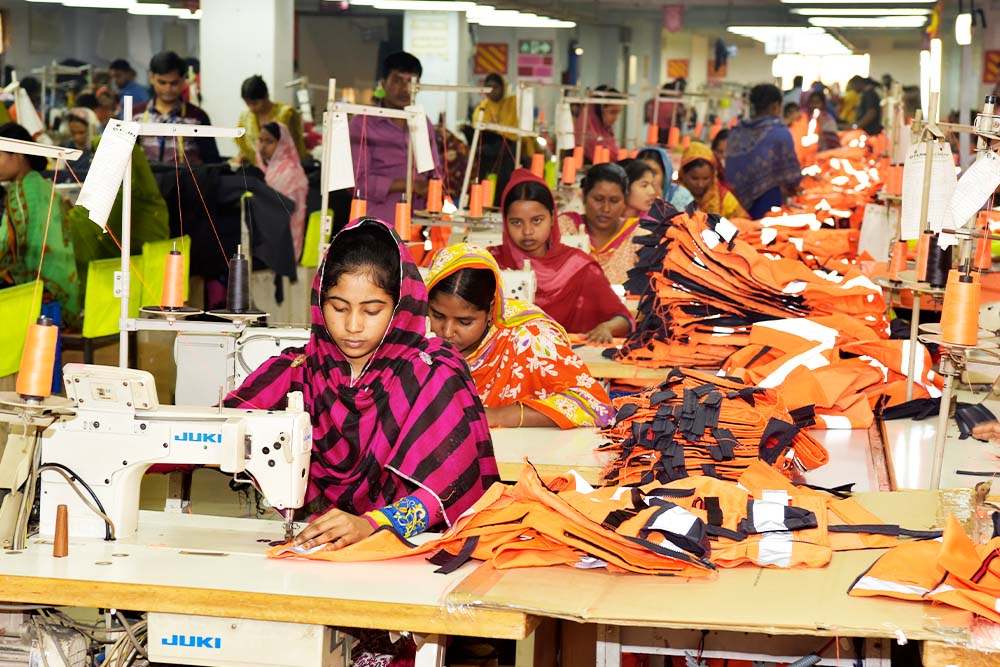The year 2022 was an uncertain year for global textiles. Global recession, energy shortages, high costs, and declining orders of low-cost garments took their toll on Pakistani textiles. The year 2023 would however be more challenging than 2022.
Inflation is at the top of textile players’ minds the world over, more so in Pakistan where inflation is many times higher than in all textile-exporting economies. They foresee inflation undercutting consumer demand in economies that are major buyers of textiles. Inflation would undercut consumer demand, pushing shoppers to curtail fashion spending or trade down for less expensive products as their energy and grocery bills spike.
The war in Ukraine is another high concern to the industry, having already disrupted trade routes and triggered an energy crisis that will continue to have an impact. In China, further COVID-19 outbreaks have undermined the region’s growth trajectory and disrupted supply chains. The Pakistani textile sector is highly dependent on inputs from China. All these factors would continue to haunt the textile industry in 2023.
Pakistan’s textile industry performed fairly well considering the additional drawbacks it faced in the shape of a weak economy and volatile political polarization. In India, the exports are declining for the last five months. In November the decline was over 15 percent over the exports executed during the same month last year (nearly the same as ours). According to the Indian Ministry of Commerce and Industry, the fall in textiles and clothing exports from India started in July this year when exports declined by 17.4 percent, in August the fall reached19.5 percent, then to 28.5 percent in September, 35.4 percent in October and to 15.6 percent in November. In comparison, Pakistan’s textile exports posted a decline of 5.1 percent during the same 5 months.
Vietnam with textiles and garments exports of $2.8 billion in the month of November 2022 posted a decline of 8 percent compared with exports achieved during the same month in 2021. The decline in exports started in September when textiles and clothing exports registered a decline of 31.9 percent in September according to figures released by Vietnamese Customs. There is panic among Indonesian clothing workers as the layoffs are increasing every day. More than 64000 workers have been shown the door in the past two months of 2022 as 18 factories in Java completely closed.
In 2023, consumers will be unpredictable and fickle. Brands must consider the factors that affect shopping behaviors and respond accordingly. Pakistan suppliers would have to keep a close eye on the changing strategies of their buyers. The issues afflicting the textile sector of Pakistan in 2023 are almost the carryover of the problems it faced in 2022. Its spinning sector is weak out of 12 million spindles installed in this sector in Pakistan hardly 1.2 million are high-speed and energy-efficient spindles. The high power rates are an additional burden on the spinning sector as inefficient spindles negate any advantage they get from government subsidies on power. The millers with 1.25 million efficient spindles enjoy the subsidies on efficiencies. The low cotton harvest is a handicap that the spinners have to cope with. Volatile global cotton prices were tough on those spinners that booked import orders when the prices were at a peak. Anyhow the spinning mills are owned by wealthy sponsors they will weather the storm but are likely to limp for a while unless the global situation and demand improves.
Bangladesh remained an exception that clocked a record over $27 billion in textile and garment exports from July to December 2022 at an average of $4.5 billion per month. At this rate, Bangladesh is likely to become the first country after China to cross the $50 billion barrier in textile and apparel exports.
The apparel sector is not feeling easy as well because of lesser orders as they enter 2023. But even during the global pressure on the apparel trade both knitwear and readymade garments registered growth though nominal. The knitwear exports during July-Nov reached $2.11 billion which was 2.53 percent higher than the corresponding period of last fiscal year. The ready-made garments exports also inched up by 1.92 percent during this period to $1.53 billion. Going forward the apparel exporters see some decline but in line with other economies. Before making comparisons it is necessary to analyze the type of apparel that Pakistan and competing economies export.
Pakistan is still in low-cost apparel exports. Its competitors in this segment are Bangladesh, India, and Vietnam. In recent years Bangladesh and Vietnam have made strides in high-value fashion apparel replacing the void left by China due to covid situation and the US imposed restrictions on Chinese textile exports. India is making efforts in this regard.
Pakistani apparel exporters established their credentials as quality producers in the segment of apparel they produced during Covid-19 when it opened its economy earlier. The country retained its share after the other economies also started operating normally. It is unlikely to lose its share to its competitors in 2023 mainly because the quality of its apparel is in many cases superior to the competitors and the price is also a little lower. It is not the competitors that worry Pakistani apparel exporters but it is shrinking of the apparel market particularly low-end apparel due to the global recession that could pose problems for them. The market for high-end clothing is expected to increase even during a recession according to various studies by experts. The reason the site is that the rich have no problem in continuing their apparel buying spree because inflation has not dented their pockets as much as it impacted the less affluent class. The rich may delay buying expensive cars but not clothing.
One more factor that goes against the interests of Pakistani textiles is the extensive efforts of the Indian government to sign free trade agreements with numerous countries. The first concession that the Indian demand while negotiating FTAs is to grant zero rating entry of their textiles and apparel in their country. In the recent FTA with Australia effective from January 1, their demand has been accepted. They will likely dominate the Australian apparel market. They are in the process of entering the same arrangements with the EU and UK and other western economies. This state support is not available to Pakistan. The weak rupee and foreign exchange woes are other worries in 2023.






